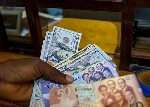Banks opting for less risky assets – BoG report
 Dr Ernest Addison, Governor of the Bank of Ghana (BoG)
Dr Ernest Addison, Governor of the Bank of Ghana (BoG)
The asset structure of the banking industry’s balance sheet in June 2024 reflected banks’ preference for less risky assets, the Bank of Ghana’s July 2024 Monetary Policy Report has revealed.
It said cash and bank balances replaced investments as the largest component of total assets, with an increased share of 35.8 per cent in June 2024, from 27.7 per cent in June 2023, on account of significant increase in banks’ reserves in compliance with the new Cash Reserve Ratio (CRR) requirements.
Investments (comprising bills, securities, and equity) was the second largest component of banks’ assets at the end of June 2024, although its share in total assets declined to 33.2 per cent, from 37.1 per cent in June 2023.
The report noted that investments and cash and bank balances together accounted for 69.0 per cent of total assets in June 2024, compared to a share of 64.8 per cent in June 2023.
Net loans and advances constituted the third-largest component of total assets, recording a share of 21.4 per cent in June 2024, down from 25.8 per cent during the same period a year ago.
Non-earning assets (fixed assets and other assets) in banks’ total assets recorded a marginal pickup in share to 9.6 per cent, from 9.4 per cent during the same period in 2023.
On the liability side, the share of deposits in banks’ liabilities and shareholders’ funds declined marginally to 76.1 per cent in June 2024, from 77.4 per cent in the corresponding period last year.
The share of borrowings rose to 7.2 per cent in June 2024, from 6.6 per cent a year ago, reflecting the growth in total borrowings during the period.
The share of shareholders’ funds in banks’ liabilities and shareholders’ funds also rose to 10.0 per cent, from 9.2 per cent, consistent with the strong growth of shareholders’ funds.
The proportion of “other liabilities” was unchanged at 6.8 per cent during the review period.
Share of Banks’ Investments
The report also mentioned that securities (long-term debt instruments) constituted the largest component of banks’ investment portfolio after its share rose to 59.8 per cent in June 2024, from 55.4 per cent in June 2023.
The share of short-term bills in total investments, however, declined from 44.3 per cent to 39.9 per cent over the same period.
The share of equity investments remained negligible and unchanged at 0.3 per cent during the period under review.
Credit Risk
The central bank noted that the industry’s asset quality deteriorated during the first half of 2024 relative to same period in 2023, principally due to a sharp increase in the Non-Performing Loan (NPL) stock, which accounted for the rise in the NPL ratio.
The elevated credit risk was broad-based, with increases in NPL ratios in all but one economic sector in June 2024 relative to June 2023, it added.
Credit Portfolio Analysis
The stock of gross loans and advances (domestic and foreign) recorded a growth of 15.6 per cent to GH¢84.5 billion at end-June 2024, as against a growth of 15.4 per cent during the same period last year, the report indicated.
It added that private sector credit (comprising credit to private enterprises and households) posted a higher growth of 17.7 per cent to GH¢78.1 billion in June 2024, from 16.1 per cent in a similar period a year ago.
On the other hand, public sector credit contracted by 5.0 per cent to GH¢6.4 billion at end-June 2024, down from a growth of 8.9 percent recorded in June 2023.
Consequently, the share of private sector credit in total credit rose to 92.4 per cent in June 2024, from 90.8 per cent in June 2023, whereas the share of public sector credit declined to 7.6 per cent in June 2024, from 9.2 per cent a year earlier.
In terms of sectoral distribution of credit, the services sector accounted for the largest share of 32.8 per cent as at end-June 2024 (from 33.6 per cent in June 2023), followed by the commerce and finance sectors, with a relative share of 23.6 per cent (from 21.5 percent in June 2023), while the manufacturing sector accounted for a share of 10.7 per cent (from 10.6 per cent in June 2023).
Together, these top three sectors accounted for 67.2 per cent of total credit (up from 65.7 per cent in June 2023).
The mining and quarrying sector remained the lowest recipient of industry credit, with a share of 3.3 per cent (from 3.4 per cent in June 2023).
Off-Balance Sheet Transactions
Off-balance sheet transactions (largely trade finance and guarantees) grew during the review period. Contingent liabilities rose by 29.0 per cent to GH¢25.7 billion as at end-June 2024, from GH¢19.9 billion as at end-June 2023.
However, banks’ contingent liabilities as a percentage of total liabilities declined to 8.8 per cent in June 2024, from 9.0 per cent in June 2023.
Asset Quality
The asset quality of the banking industry declined during the period under review, noted the report.
It said the industry’s NPL ratio rose to 24.2 per cent in June 2024, from 18.7 per cent in June 2023.
When adjusted for the fully provisioned loan loss category, the industry’s NPL ratio still increased to 10.8 per cent in June 2024, from 7.8 per cent, reflecting increasing stock of all categories of nonperforming loans.
The rise in the NPL ratio during the period under review was explained by the higher growth in the NPL stock relative to the growth in total loans.
The industry’s NPL stock grew by 49.4 per cent to GH¢20.4 billion in June 2024, up from GH¢13.7 billion, reflecting a deterioration in both domestic and foreign currency-denominated loans in the period under review.
The private sector accounted for the largest share of the non-performing loans, being the largest recipient of the industry’s credit.
The proportion of NPLs attributable to the private sector rose marginally to 95.6 per cent in June 2024, from 95.5 per cent in June 2023, while that of the public sector declined to 4.4 per cent, from 4.5 per cent in a similar period last year.
The agriculture, forestry, and fishing sector recorded the highest NPL ratio of 56.4 per cent (an increase from 30.0 per cent a year ago), followed by the transportation, storage and communication sector with an NPL ratio of 49.1 per cent (from 22.1 per cent a year earlier).
The NPL ratio of the construction sector rose to 36.8 per cent (from 32.8 per cent), followed by the electricity, water and gas sector at 20.6 per cent (from 7.8 per cent), and then the commerce and finance sector unchanged at 20.2 per cent.
The mining and quarrying sector accounted for the lowest NPL ratio of 13.7 per cent in June 2024 (from 12.7 per cent a year earlier).
Trending Business

President Mahama: Nkoko Nketenkete project to launch in Oct
19:01
V/R: AGI marks 30 years with bold vision for 24-hour economy
13:48
NEIP, MoFA partner to support agric entrepreneurs under 'Adwumawura' programme
16:41
Ga East Assembly holds departmental budget hearing for 2026 fiscal year
10:15
Chief of Staff reaffirms gov't’s commitment to 24-hour economy at BoG workshop
03:29
SIC-FSL MD cuts his own and staff salaries by 20% to salvage the company
16:11
Engineers & Planners completes acquisition of Azumah Resources Ghana and Upwest Resources
12:35
Commercial Transport Operators issue ultimatum over high spare parts prices
09:01
Mahama outlines measures to find real value of Cedi and boost economic confidence
04:40
Mahama: Ghana’s economy experiencing price stability, inflation at four-year low
02:17



